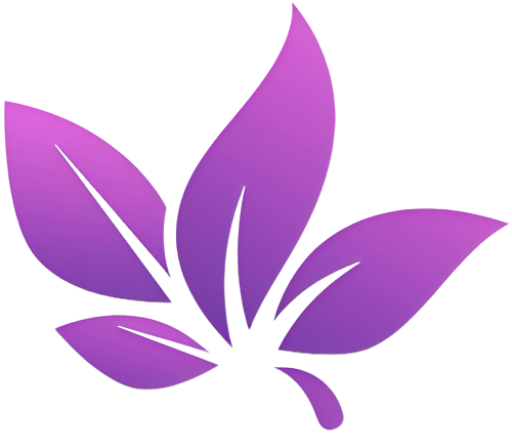Yellow alyssum, also known as Aurinia saxatilis, offers gardeners an easy-to-grow plant that delights with its vivid yellow blooms. Often called “Basket of Gold” for its radiant display, it’s a low-maintenance perennial that’s perfect for rock gardens, borders, and pathways. Whether you’re an experienced gardener or a beginner, yellow alyssum brings effortless beauty and vitality to your outdoor space.
1. Origins and Natural Habitat
Yellow alyssum is native to southern Europe and thrives in dry, rocky areas, making it well-suited to a variety of climates, especially in regions with poor soil. It’s commonly found growing in the Mediterranean, where it has adapted to harsh, sunny environments. Its ability to grow in tough conditions is one of the reasons it’s favored for low-maintenance landscaping. The plant has also naturalized in North America, often seen flourishing in arid, disturbed soils.
2. Features of Yellow Alyssum
This plant is a mat-forming perennial, growing around 6-12 inches tall. Its most notable feature is the profusion of small, bright yellow flowers that bloom in early spring to early summer. These blooms create a carpet of golden color that can brighten up even the most challenging spots in your garden. The silvery-grey foliage adds a lovely contrast, offering aesthetic appeal even when the flowers are not in bloom.

3. How to Grow and Care for Yellow Alyssum
Soil and Light Requirements: Yellow alyssum thrives in full sun and well-drained soil, ideally with a pH that ranges from neutral to slightly alkaline. Although it prefers rocky or sandy soils, it can tolerate average garden soil as long as it’s not waterlogged. Once established, yellow alyssum is highly drought-resistant, making it a top choice for xeriscaping or gardens in drier climates.
Planting Tips: The best time to plant yellow alyssum is in early spring or late summer. If you’re starting from seeds, sow them directly outdoors once the threat of frost has passed. The seeds are tiny, so they should be lightly pressed into the soil but not fully buried. The plant will self-seed readily if left to grow naturally.
Watering Needs: This resilient plant doesn’t require much water once established. Overwatering can actually harm yellow alyssum, as it prefers drier conditions. A moderate amount of watering during its growth period is enough to keep it healthy.
4. The Role of Yellow Alyssum in Landscaping
Yellow alyssum is often used as a ground cover, particularly in rock gardens, as its spreading habit helps fill in gaps and prevent soil erosion. The plant’s cascading growth makes it perfect for edging walkways, patios, or raised beds. Additionally, it pairs beautifully with other drought-tolerant plants like lavender, sedum, and ornamental grasses. Its bright yellow flowers offer a striking contrast to deeper green foliage and softer colored blooms in the garden.
5. Companion Planting with Yellow Alyssum
Yellow alyssum’s low-growing habit makes it an excellent companion for taller plants like irises, roses, or lavender. These taller plants provide a structured backdrop, while yellow alyssum serves as a bright, eye-catching foreground. You can also plant it alongside other drought-resistant species like sedum or creeping thyme for a truly low-maintenance landscape that remains vibrant year-round.
6. Problems and Pests: Rare but Manageable
One of the best things about yellow alyssum is that it’s largely pest-free. Its strong scent tends to deter most common garden pests. However, in overly moist conditions, it may be prone to root rot, so it’s important to avoid overwatering. Aphids may occasionally be seen, but they can be easily managed with a strong spray of water or natural insecticides.
Yellow alyssum can also show signs of stress in overly fertile soil, causing its growth to become leggy. Keep the soil relatively lean for best results, and avoid heavy fertilization, as this plant thrives in low-nutrient environments.
7. Long-Term Maintenance and Pruning
Pruning yellow alyssum after it finishes blooming can encourage a second bloom later in the season. It also helps to maintain the plant’s shape and prevents it from becoming too leggy. Simply trim the plant back by about one-third of its height. Deadheading is another useful technique, as removing spent flowers promotes new blooms and prevents the plant from self-seeding too vigorously, which could lead to overcrowding.
In colder climates, yellow alyssum may not survive harsh winters, but in milder regions, it can remain evergreen year-round. If the plant does die back, simply mulch over it to protect the roots, and it will likely return the following spring.
8. Why Choose Yellow Alyssum for Your Garden?
Aside from its visual appeal, yellow alyssum is incredibly low-maintenance and can thrive in conditions that many other plants find challenging. Its drought tolerance, combined with its ability to grow in poor, rocky soils, makes it a perfect choice for busy gardeners looking for a splash of color with minimal effort. It’s also a bee-friendly plant, providing nectar for pollinators in early spring when other flowers have yet to bloom.
In conclusion, yellow alyssum is a garden gem that combines beauty, resilience, and versatility. Whether you need a hardy ground cover or a bright accent for your borders, this plant brings color and life to any landscape. By understanding its needs and care, you can enjoy a stunning display of golden blooms for years to come.
